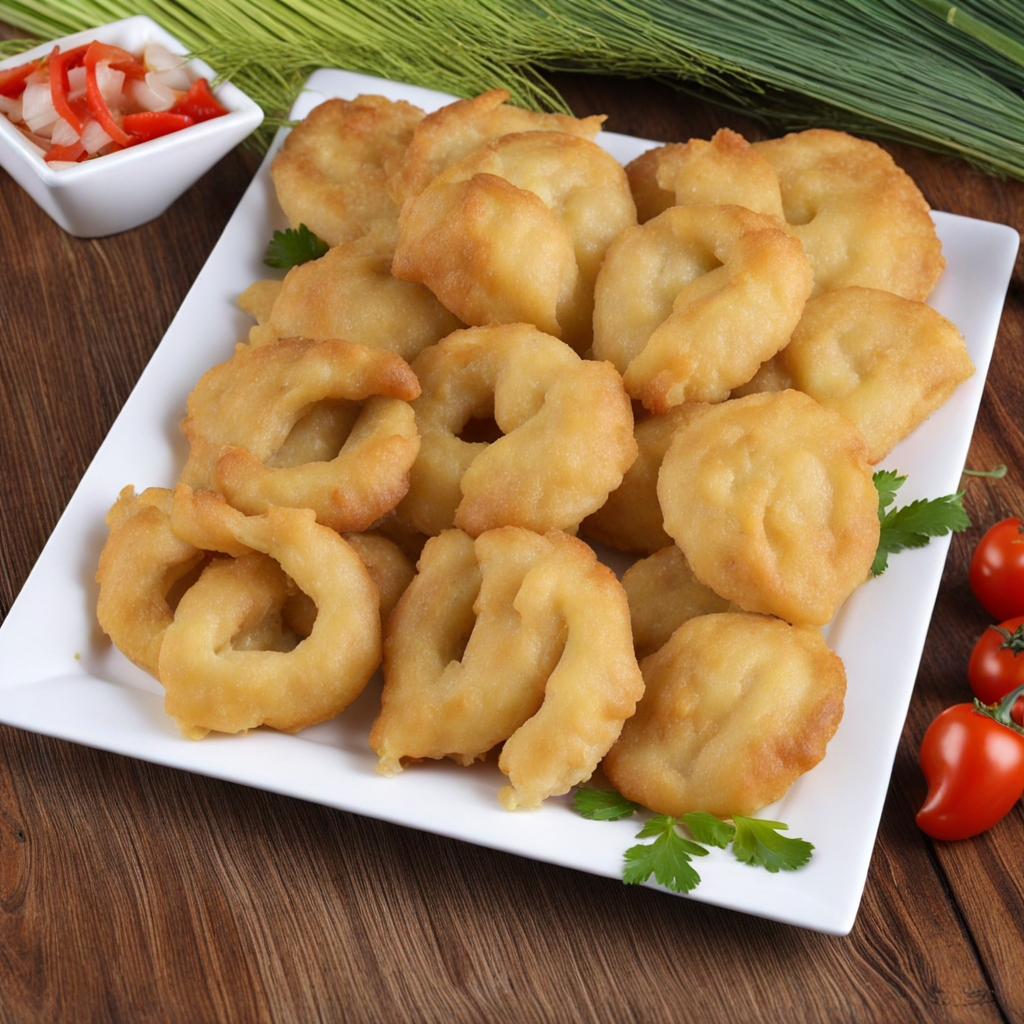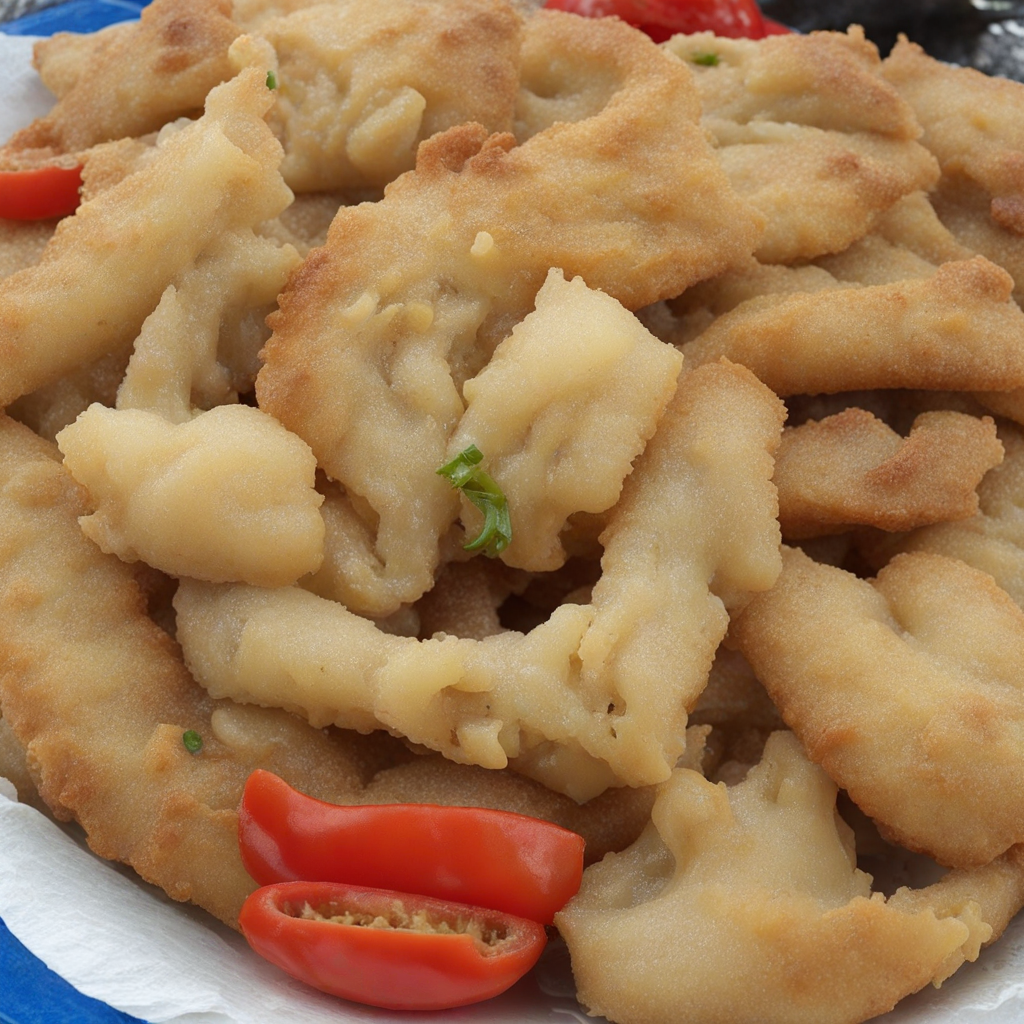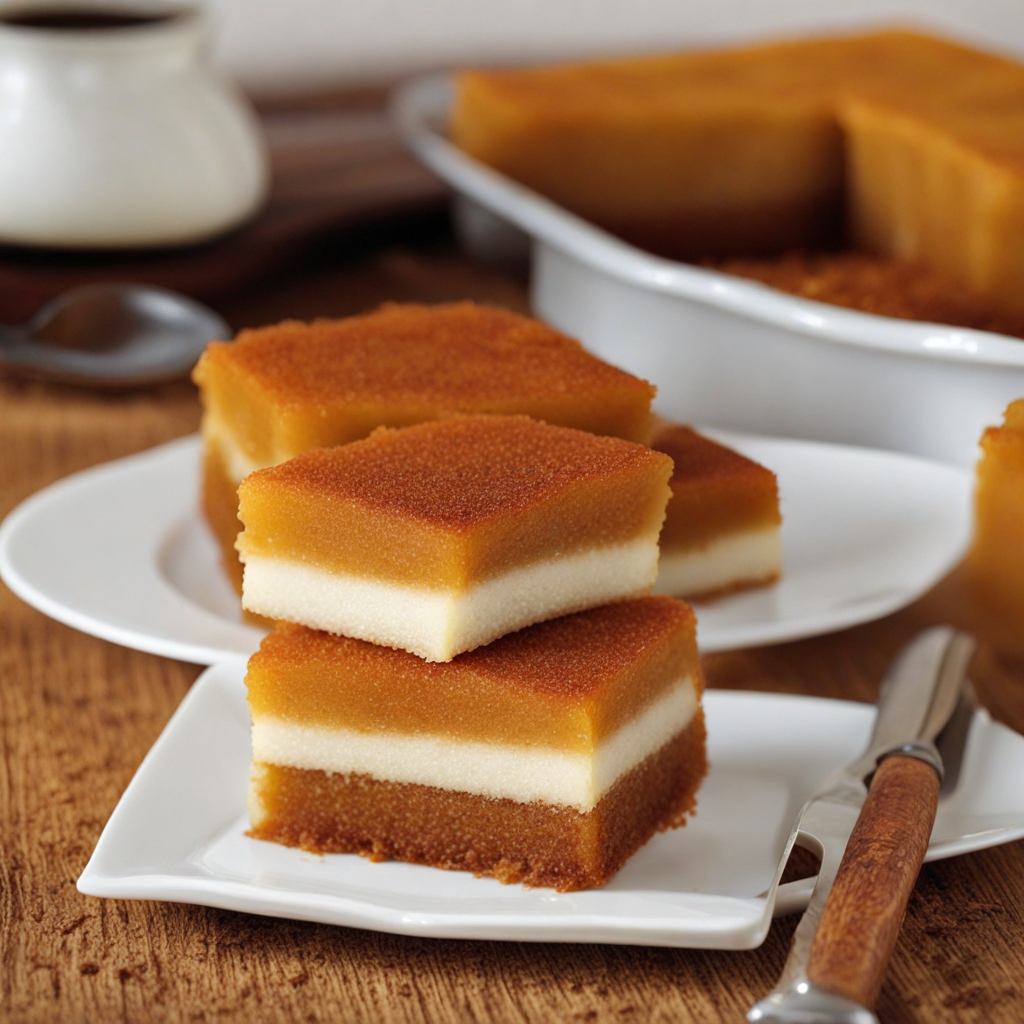Bake and Saltfish
Bake and Saltfish is a delightful dish that embodies the vibrant flavors and culinary traditions of Guyana. The "bake" refers to a fluffy, golden-brown bread that is deep-fried to achieve a crispy exterior while remaining soft and airy inside. Made from simple ingredients like flour, baking powder, and water, this bread serves as the perfect base for pairing with various savory fillings. Its slightly sweet flavor complements the savory saltfish beautifully, creating a harmonious balance on the palate. Saltfish, typically made from dried and salted cod, is the star of this dish. The fish is soaked to remove excess salt and then cooked with aromatic ingredients such as onions, tomatoes, bell peppers, and spices. This preparation infuses the fish with rich flavors and a satisfying texture. The combination of the flaky saltfish and the warm, fluffy bake creates a comforting and hearty meal that is both satisfying and nourishing. Bake and Saltfish is often enjoyed as a breakfast or lunch option but can also make for a delightful snack. It is commonly served with additional toppings like sliced avocados, hot pepper sauce, or even a side of fried plantains for a complete experience. This dish not only reflects the culinary heritage of Guyana but also showcases the country's use of fresh, local ingredients, making it a must-try for anyone looking to explore new tastes and flavors.
How It Became This Dish
Bake and Saltfish: A Culinary Journey through Guyana’s Rich Heritage Origins and Historical Context Bake and saltfish is a beloved dish in Guyana, encapsulating not just a meal but a rich tapestry of cultural influences that reflect the country’s diverse heritage. The dish consists of “bake,” which is a fried dough bread, and “saltfish,” usually made from dried, salted cod. The origins of saltfish can be traced back to the European fishing practices of the 15th century, particularly among the Portuguese and Spanish who sought to preserve their catch. Salted fish became an essential part of the diet for many sailors and coastal communities. In the Caribbean, the tradition of salting and drying fish took root during the colonial period, when enslaved Africans were brought to work on plantations. They adapted their culinary practices, incorporating available ingredients into their diets. The introduction of saltfish to the region was also influenced by European traders and settlers who brought their culinary traditions, creating a melting pot of flavors and techniques. Cultural Significance Bake and saltfish is not just a dish; it holds a mirror to Guyana's cultural identity. Guyana is one of the most ethnically diverse countries in South America, with Indigenous peoples, Afro-Guyanese, Indo-Guyanese, Chinese, and Portuguese communities contributing to its vibrant culinary landscape. Each group has left an indelible mark on the nation’s cuisine, and bake and saltfish stands as a testament to this blending of cultures. For Afro-Guyanese, the dish resonates with a sense of heritage and communal identity. It is often served during festivities, family gatherings, and social events, symbolizing togetherness and celebration. In Indo-Guyanese households, it may be accompanied by a side of curry or chutney, showcasing the adaptability of the dish as it melds with other culinary traditions. Furthermore, bake and saltfish is frequently enjoyed as a breakfast option or a hearty snack, making it a staple in the daily lives of many Guyanese. The communal aspect of sharing this dish is significant; it fosters a sense of belonging and cultural pride. Development Over Time Over the years, bake and saltfish have evolved while remaining rooted in tradition. The preparation of saltfish has remained relatively unchanged, but the way it is served has seen variations. Traditionally, the fish is soaked to remove excess salt, then boiled and flaked before being sautéed with onions, tomatoes, and peppers, infusing it with a rich flavor. This method remains popular, but modern variations may include the addition of spices or herbs, reflecting the influence of contemporary culinary trends. The bake itself, a simple yet versatile dough, is typically made from flour, baking powder, salt, and water, and it is fried to achieve a golden-brown crust. Traditionally, bake was made with simple ingredients available to the early Guyanese, but today, bakers experiment with different flours, such as whole wheat or cornmeal, to cater to diverse dietary preferences. In urban settings, the dish has become a popular street food, with vendors setting up stalls and food carts offering bake and saltfish to busy city dwellers. This evolution has made the dish more accessible to a broader audience, ensuring its place in the fast-paced lifestyle of modern Guyanese society. The Role of Bake and Saltfish in Modern Guyanese Culture In contemporary Guyana, bake and saltfish is not just a staple in homes; it has also found its way into restaurants and cafes, often accompanied by a variety of sides such as avocado, fried plantains, or even a spicy pepper sauce. The dish is celebrated during cultural festivals, like Mashramani, which marks Guyana’s Republic Day, where food vendors showcase traditional Guyanese fare, including bake and saltfish, to locals and tourists alike. Moreover, the dish has become a symbol of national pride, often featured in culinary competitions and food festivals. As Guyana continues to embrace its cultural diversity, bake and saltfish stands as a unifying dish that brings people together, regardless of their ethnic background. It is a perfect example of how food can transcend barriers and foster community bonds. Conclusion Bake and saltfish is more than just a popular dish in Guyana; it is a culinary embodiment of the country’s history, culture, and evolution. From its origins in the colonial fishing practices to its current status as a cherished part of Guyanese identity, this dish encapsulates the spirit of a nation that celebrates its diversity through food. As Guyana continues to grow and change, bake and saltfish will undoubtedly evolve further, adapting to new influences while remaining a beloved staple that pays homage to its rich heritage. Whether enjoyed at a family gathering, as street food, or in a fine dining setting, bake and saltfish will always hold a special place in the hearts and palates of the Guyanese people, serving as a delicious reminder of their shared history and cultural pride.
You may like
Discover local flavors from Guyana







